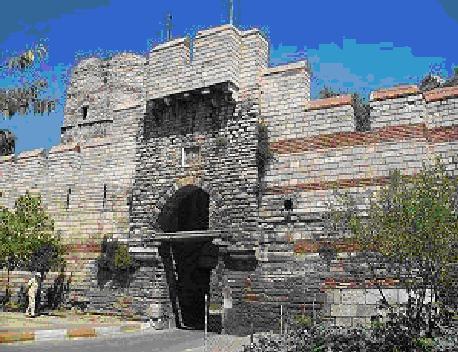*Image Credit: Wikimedia Commons Near the end of the Crusades, Asia Minor was awash in military conflict. Unable to reach Egypt due to a lack of supplies, Europeans instead ignored the orders of Pope Innocent II and opted to invade Constantinople in 1204. After nearly six decades in exile, Nicaean general Alexios Strategopoulos re-established the Byzantine Empire by leading his armies into the once-mighty capital on July 25, 1261. The Eastern Orthodox Church had returned to its roots. In the wake of the Fourth Crusade, the Byzantine leaders disappeared into three strongholds – Nicaea, Trebizond and Epirus – in the hopes of reclaiming their former capital from the Latin Crusaders. Having attempted to negotiate a treaty to reunite the Church and join the effort to take down the Muslim seats of power in Egypt, the sack of Constantinople had left them with no option but to divide the former territories and hold on for dear life. Facing encroachment from the east by the Seljuk Sultanate of Rum – who would soon be fighting a war with the Mongols under Genghis Khan – the Nicaeans had given up much of southern Anatolia in the decades that followed. However, with the Seljuks doing battle with the invaders from Mongolia, Michael VIII Palaiologos sensed an opportunity for the Nicaeans to turn their attention toward the Latin Empire established by the Crusaders in his former capital. Having defeated the armies of Epirus and Achaea during the Battle of Pelagonia in 1259, he turned his armies toward Constantinople the following year to do what his four predecessors could not. Having negotiated an alliance with the city-state of Genoa, Michael ordered his general, Strategopoulos, to formulate a plan of attack for retaking the Byzantine Empire’s crown jewel. For months, standing on the hills above Constantinople, Strategopoulos observed the movements of the Latin armies within. By late July of 1261, he had learned from farmers in the surrounding area that much of the soldiers had moved out to attack the Nicaean island of Daphnousia – Constantinople had little more than a token protective force. Sensing an opportunity but concerned about the possibility of ambush for his 800-man army, Strategopoulos moved his soldiers into a monastery near the Selymbria Gate. With the help of a handful of the farmers, he sent a group into town through a secret passage to attack the Latins from behind. Caught by surprise and fearing a reprisal, Emperor Baldwin II rushed out to the port of Constantinople to be rescued by ships from the Venetian fleet. The city was now in Byzantine hands once again. On August 15th, Michael proceeded through town on his way to Hagia Sophia. Witnessing the destruction wrought by the Crusaders and his own Nicaean army along the way, he took the crown triumphantly. After 57 years in exile, the Byzantine Empire had been restored to its rightful home – one it would lose once and for all when the Sultan Mehmed and the Ottomans arrived in 1453.
July 25, 1261 CE – Alexios Strategopoulos and the Nicaeans Recapture Constantinople
*Image Credit: Wikimedia Commons Near the end of the Crusades, Asia Minor was awash in military conflict. Unable to reach Egypt due to a lack of supplies, Europeans instead ignored…
